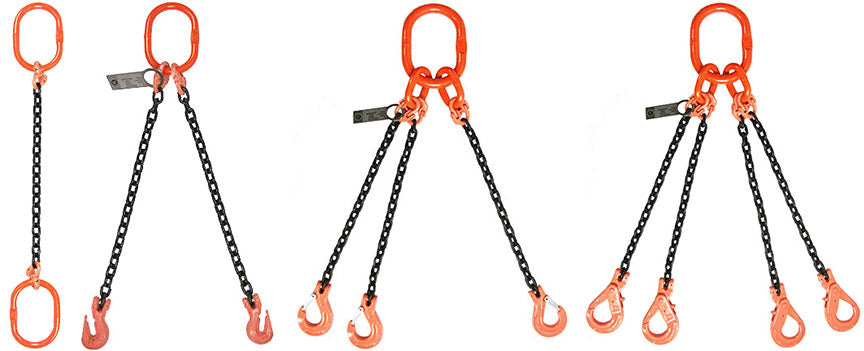When lifting a load with any type of rigging equipment the balance and weight of your load is a large determining factor on how to lift it safely. Chain slings are commonly used because of their strength and ability to adapt to the shape of the load. In addition, chain slings can be heated to temperatures of up to 400 degrees Fahrenheit without permanently reducing its strength.

Tip 1: Use An Appropriate Chain Sling
Slings should be selected that are suitable for the type of load, hitch and environment. When using multiple leg slings, the rated load for the single leg sling shall not be exceeded in any leg of the multiple leg sling. When using multiple slings with non-symmetrical loads, a qualified person should make sure that no leg on the chain sling will be overloaded.
If you are working in an environment with exposure to chemicals such as gases or vapors, or working under extreme temperatures, check with the sling manufacturer to learn of any capacity reduction or possible degradation to the sling.
If you are lifting fragile loads, a spreader beam is recommended and corner protectors to prevent damage of the load.
When a load is lifted by a chain sling, the legs of the sling with exert lifting forces to raise it. These forces can crush or deform the load if it cannot withstand these forces.
Tip 2: Inspect Chain Sling Before Using
Only slings fabricated with Grade 80, Grade 100 and higher chain and components are strong enough and can be used for overhead lifting. Check the links to make sure it has the 80, 100 or 120 markings.
All slings should include a tag with the load capacity and hitch capacities on them.
Make sure to check the links of your chain sling before using it because any links that are worn, bent, gouged or stretched can affect the capacity of the sling. Also, the chain should not be twisted or knotted, instead it should be free of any sharp edges or nicks.
Before lifting the load, make sure that every leg of the sling is connected and that the hoist or crane is directly over the load. Never shorten a sling by knotting or twisting the chain. Instead use a chain with an adjuster because these have been designed specifically for shortening the chain.
Written records are not required for frequent inspections (inspection interval less than monthly), however, a complete inspection of the sling is required periodically (normal service interval, not to exceed 1 year). Keep a written record of your periodic inspections in case you ever need them for OSHA inspection purposes.
Tip #3: Store Your Sling As A Prized Possession
 Your overhead rigging equipment only works as well as it is treated. Slings should be hung in a cabinet, off the floor, away from dirt and grime, and preferably in a place where air can circulate around the chains to keep them dry. When using chain slings, avoid dragging them on the floor or over abrasive surfaces. Also be alert to possible snagging on materials or the load itself. For additional rigging tips or questions, please call our office at 800-242-3477 or visit OSHA.gov for specific tips on proper chain sling usage.
Your overhead rigging equipment only works as well as it is treated. Slings should be hung in a cabinet, off the floor, away from dirt and grime, and preferably in a place where air can circulate around the chains to keep them dry. When using chain slings, avoid dragging them on the floor or over abrasive surfaces. Also be alert to possible snagging on materials or the load itself. For additional rigging tips or questions, please call our office at 800-242-3477 or visit OSHA.gov for specific tips on proper chain sling usage.
--
WiscoLift manufacturers 1-, 2-, 3- and 4-leg Grade 100 Chain Slings. View their wide selection of chain slings at WiscoLift.com/Chain-Slings.
